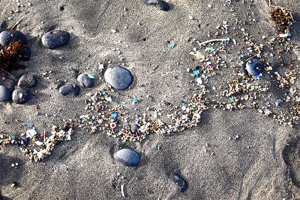
What are microplastics?
Microplastics are small bits of plastic, 5 millimeters or less, and either engineered for end-products, or the result of environmental degradation of polymer-based trash.
Researchers have found microplastics in marine and terrestrial life. It invades the food chain, and it’s even been found in salt, sugar, beer, alcohol, and honey. Not to mention glaciers and rainwater.
Primary versus secondary microplastics
Primary microplastics are directly released into the environment as small plastic particles. These are intentionally engineered particles, like those found in some consumer and industrial products. Cosmetics have used microplastics as abrasives.
Secondary microplastics are the result of the degradation of large plastic waste, like plastic bags and bottles, into smaller plastic fragments when exposed to our environment.
Microplastic characterization and identification
Raman spectroscopy plays a key role in identifying the types and origins of microplastics. It’s part of the efforts to develop policies and procedures for controlling the amount of microplastics introduced into our ecosystem. We look at the issues you face, and its effect on the biosphere and human health.
HORIBA solutions are suitable for beginners as well as for the most demanding users and our expertise and knowledge provide support as you study microplastics.
Visit the Raman Academy to learn more about the role of Raman Spectroscopy in microplastics characterization!
